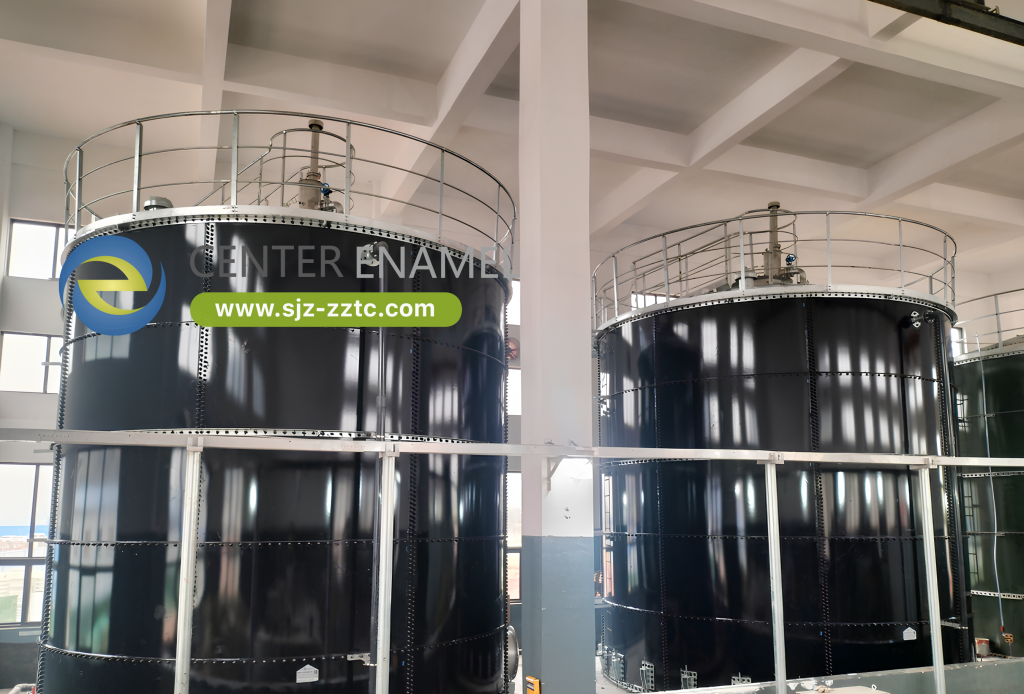How UASB System Efficiently Treats Wastewater from Grain Processing Plants | Center Enamel

Grain processing plants generate significant volumes of wastewater that contain high levels of organic matter, suspended solids, and nutrients. The efficient treatment of this wastewater is essential not only for regulatory compliance but also for minimizing environmental impact and optimizing operational costs. The Upflow Anaerobic Sludge Blanket (UASB) system has emerged as a leading technology for treating wastewater from grain processing facilities. Center Enamel offers advanced solutions incorporating UASB technology to deliver reliable and sustainable wastewater treatment.
Key Components and Process Dynamics
Anaerobic Microbial Consortia:
Central to the UASB system is the microbial consortia that degrade organic pollutants. These microorganisms operate in an oxygen-free environment, metabolizing the organic load and forming compact sludge granules. The formation of these granules is critical for process stability and ensures that the reactor maintains high treatment efficiency even under variable wastewater loads.
Upflow Design:
The reactor’s design ensures that wastewater flows upward through the sludge blanket, enhancing contact between the contaminants and the microbial community. This design promotes efficient mass transfer and improves the breakdown of complex organic compounds. Additionally, the upflow configuration helps in the separation of treated effluent from the biomass, thereby reducing the need for additional clarification steps.
Biogas Production:
One of the notable benefits of the UASB system is its ability to produce biogas during the treatment process. The methane generated can be captured and utilized for on-site energy generation, offsetting operational costs and contributing to a reduction in the plant’s carbon footprint.
Advantages of UASB Systems for Grain Processing Wastewater
High Organic Load Reduction:
Grain processing wastewater is characterized by high levels of organic compounds resulting from starches, sugars, and proteins. UASB systems are highly effective in reducing these organic loads, often achieving substantial COD reduction. This performance makes the system ideal for handling the fluctuating wastewater quality typical in grain processing operations.
Operational Efficiency and Low Energy Requirements:
The anaerobic process inherent in UASB reactors operates without the need for extensive aeration, which is a significant energy-saving advantage over aerobic treatment methods. The low energy requirements contribute to the overall cost-effectiveness of the system. Moreover, the continuous flow design minimizes downtime and ensures steady treatment performance.
Scalability and Adaptability:
UASB reactors can be scaled to accommodate different processing capacities, making them suitable for both small and large grain processing facilities. The modular nature of the system allows for phased expansion, providing flexibility as production volumes change over time.
Renewable Energy Integration:
By converting organic waste into biogas, UASB systems provide a renewable energy source that can be used to power ancillary operations within the plant. This not only reduces dependency on external energy sources but also enhances the sustainability profile of the processing facility.
Reduced Sludge Production:
Compared to conventional aerobic processes, UASB systems generate lower quantities of excess sludge. The compact nature of the anaerobic biomass reduces the volume of waste that must be managed and disposed of, further lowering operating costs and environmental impact.
Center Enamel’s Role in UASB Solutions
At Center Enamel, our expertise in advanced wastewater treatment technologies is reflected in our UASB system offerings. Our solutions are designed with a focus on durability, efficiency, and long-term operational stability. Key features of our UASB systems include:
- Precision Engineering: Our reactors are designed using state-of-the-art modeling and simulation tools to optimize hydrodynamics and microbial contact, ensuring maximum treatment efficiency.
- Customizable Design: Recognizing that each grain processing plant has unique wastewater characteristics, we offer customizable UASB systems tailored to specific organic loads, flow rates, and plant capacities.
- Integrated Biogas Utilization: We provide systems that not only treat wastewater but also capture biogas for energy recovery. Our integrated solutions help plants reduce energy costs and promote a circular economy.
- Robust Construction: Our UASB reactors are constructed from high-quality materials, ensuring resistance to corrosive environments and mechanical wear. This durability is critical for maintaining consistent performance over the reactor’s operational lifespan.
- Comprehensive Support: From initial design through installation and maintenance, Center Enamel provides comprehensive support to ensure that our UASB systems operate at peak efficiency.
Economic and Environmental Impact
The adoption of UASB technology in grain processing plants yields significant economic and environmental benefits. Economically, the reduction in energy consumption and the potential for biogas utilization contribute to lower operating costs. Furthermore, the efficient treatment process reduces the need for downstream polishing steps, leading to additional cost savings. Environmentally, the effective reduction of organic pollutants and nutrient loads minimizes the impact on local water bodies, supporting compliance with environmental regulations and contributing to the sustainability of agricultural operations.
For operators seeking to enhance wastewater treatment efficiency while achieving sustainability and cost savings, Center Enamel offers a robust solution through its UASB technology. Contact Center Enamel today to explore how our UASB systems can be integrated into your grain processing plant to achieve superior wastewater treatment and energy recovery.
